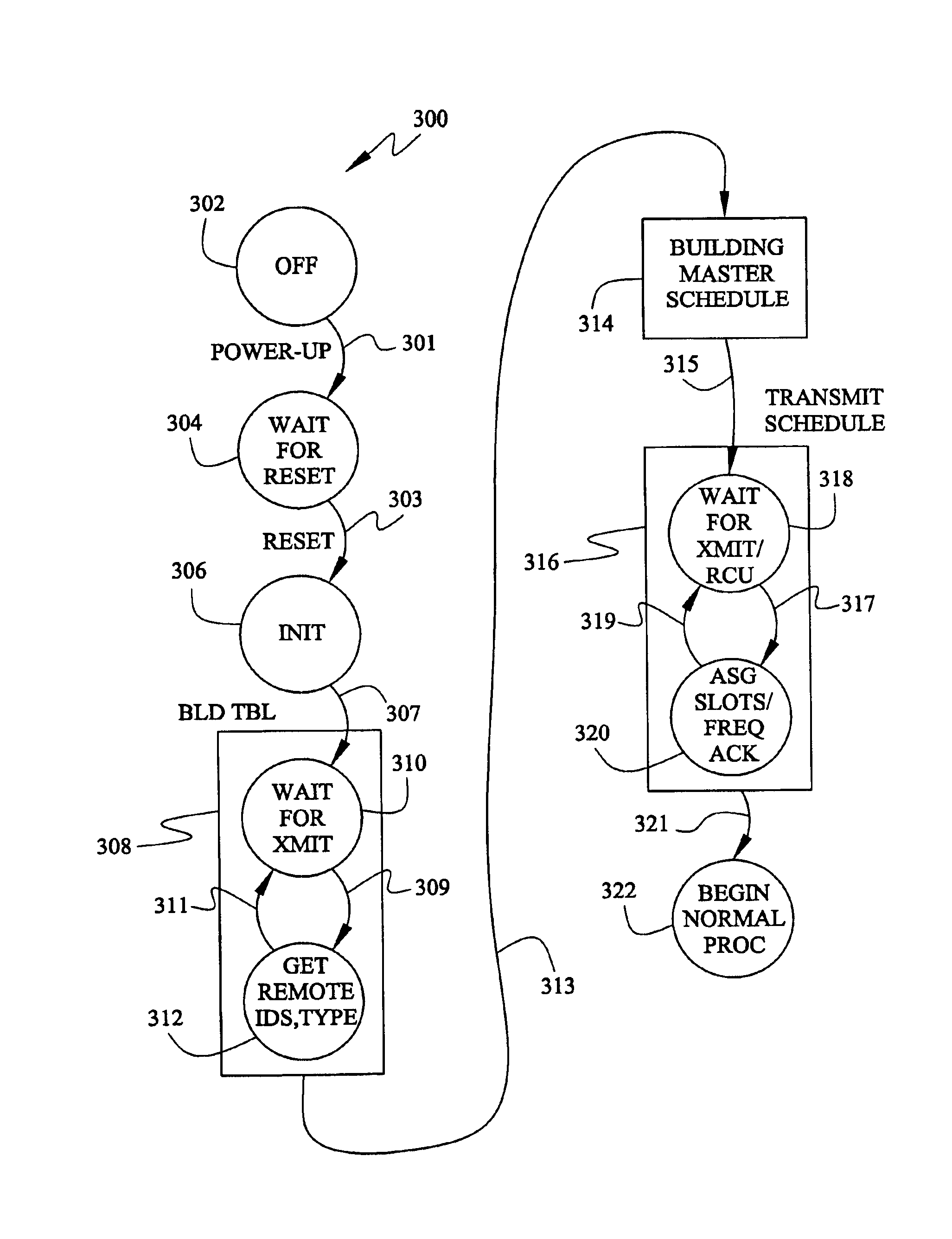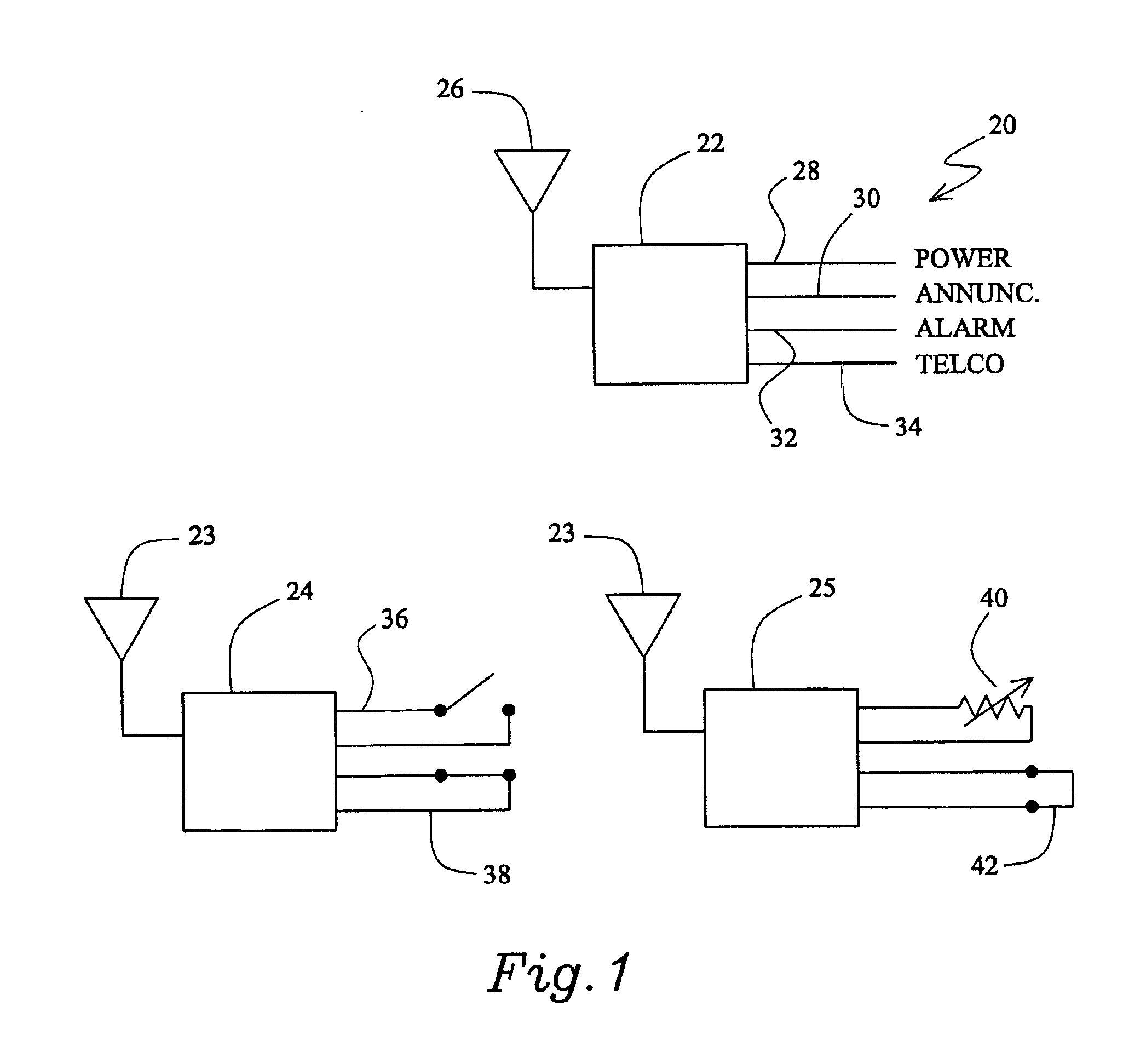Wireless control network with scheduled time slots
a wireless control and time slot technology, applied in the field of building monitoring and control, can solve the problems of power requirement partially negating the wireless advantage of radio frequency units, high cost of installing hard-wired systems in existing buildings, and high cost of retrofitting residential dwellings. achieve the effect of reducing the update rate, increasing the update rate, and optimizing the system
- Summary
- Abstract
- Description
- Claims
- Application Information
AI Technical Summary
Benefits of technology
Problems solved by technology
Method used
Image
Examples
Embodiment Construction
[0026]FIG. 1 illustrates a wireless control system 20 including a master unit 22 and two wireless remote units 24 and 25. Master unit 22 includes an antenna 26, a power supply line 28, annunciator panel output line 30, alarm device output line 32, and telephone line 34. A building monitoring and control system according to the present invention typically has at least one master unit which is commonly powered with AC line power but can be battery powered, or have battery back-up power. Remote unit 24 includes an antenna 23 and is coupled to two discrete sensor inputs 36 and 38. Sensor input 36 is a normally open sensor and sensor input 38 is a normally closed sensor. Sensors 36 and 38 can be reed switches or Hall effect devices coupled to magnets used to sense door and window opening and closing. Sensor 38 can be a foil continuity sensor used to detect glass breakage. Remote unit 25 includes antenna 23 and two analog sensors 40 and 42. Sensor 40 is a variable resistance device and se...
PUM
 Login to View More
Login to View More Abstract
Description
Claims
Application Information
 Login to View More
Login to View More - R&D
- Intellectual Property
- Life Sciences
- Materials
- Tech Scout
- Unparalleled Data Quality
- Higher Quality Content
- 60% Fewer Hallucinations
Browse by: Latest US Patents, China's latest patents, Technical Efficacy Thesaurus, Application Domain, Technology Topic, Popular Technical Reports.
© 2025 PatSnap. All rights reserved.Legal|Privacy policy|Modern Slavery Act Transparency Statement|Sitemap|About US| Contact US: help@patsnap.com



